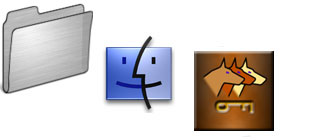 ![[Header]](../XuShared2/Line3.jpeg)

(Up to OJB's Mac Tips List Page)
Terminal Tips: Deleting FilesThere are some situations when deleting files using the command line is preferable to deleting them in the Finder. For example, the command line can delete files which are protected because of their ownership and it can also delete files securely, so they cannot be recovered.
CAUTION: Do I need to mention that using the delete command can lead to files being deleted?
The command to delete files in Unix is "rm" (remove). To use it, just navigate to the directory (folder) containing the file(s) to delete and type "rm filename", where filename is the name of the file to delete. You can delete multiple files using a "wildcard" in the filename, for example rm file* will remove all files starting with "file". Use rm * to remove everything in the current folder (be careful, OK?).
Theoretically, files which have been deleted can be recovered using the correct software (file recovery or "undelete" programs). If you have sensitive data you really want to delete, use the "rm -P filename" command. Remember, the idea of this is to make the file unrecoverable so don't use it on useful files!
If the files you want to delete are not owned by you they can still be deleted using the "sudo" command with "rm", like this: "sudo rm filename", then supply the admin password.
![[Up]](../XuShared/Up2B.jpeg)
|

![[Up]](../XuShared/Up2B.jpeg)